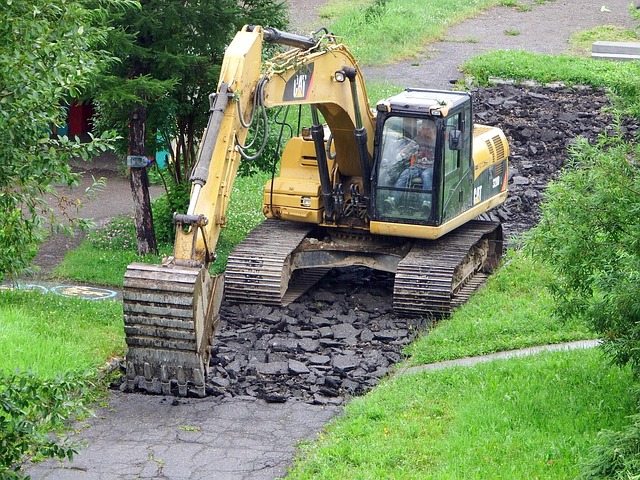Sidewalks are more than mere slabs of concrete—they’re vital arteries of pedestrian mobility, especially in bustling boroughs like Brooklyn. But with the charm of brownstones and tree-lined streets comes the responsibility for property owners to maintain the walkways outside their buildings. In Brooklyn, sidewalk neglect isn’t just an eyesore or safety hazard—it can also be a fast track to steep fines and legal headaches, courtesy of the New York City Department of Transportation (DOT).
Understanding DOT Compliance
In New York City, the DOT holds property owners responsible for the maintenance and repair of sidewalks adjacent to their properties. This includes ensuring the surface is even, crack-free, and unobstructed by tree roots or personal debris. Failing to meet these standards can result in a DOT violation notice, which not only mandates corrective work but also opens the door to penalties if ignored.
Typically, the DOT conducts periodic inspections or responds to complaints from residents. When a sidewalk defect is found, the DOT issues a notice giving the owner 45 days to complete the necessary repairs. If they don’t act within that timeframe, the city may step in, contract the work themselves, and bill the property owner—often at a much higher cost than if the owner had hired their own licensed contractor. In some cases, these charges may also be added to the property tax bill.
Common Sidewalk Violations in Brooklyn
Brooklyn’s diverse infrastructure and natural growth patterns make it uniquely prone to certain types of sidewalk issues. For example, tree root damage is common due to the density of street trees throughout the borough. Other frequent violations include tripping hazards caused by uneven pavement, cracks exceeding a certain width, and sections sinking due to poor drainage or soil erosion.
Given Brooklyn’s architectural richness and varying building ages, property owners must be especially vigilant. Even minimal neglect can snowball into more serious structural damage—and once the city steps in, homeowners lose control over the quality, timing, and cost of repairs.
Repair vs. Replacement: What’s Required
Not all damage necessitates a full sidewalk replacement. In many cases, sections can be repaired selectively using concrete patching or leveling techniques. However, DOT compliance requires that the final result be safe and seamlessly integrated into the surrounding pavement. This means amateur fixes or temporary solutions won’t pass inspection and may result in repeat violations.
Hiring a licensed sidewalk contractor is essential—not only for the quality of the work but to ensure that all regulatory details are covered, including permits, safety precautions, and proper curing time. It’s also important to work with professionals who have experience dealing with DOT regulations and can manage the documentation needed to clear violations and avoid future ones.
Tree Roots and DOT Involvement
Sidewalk damage caused by street trees is particularly tricky because these trees are city-owned. Homeowners are still responsible for repairing the damage unless the tree is on the DOT’s root-prone list, in which case the city may assist with repairs or mitigation. However, even in such cases, coordination with NYC Parks and the DOT is necessary, and delays are common.
To avoid these complications, many property owners in Brooklyn opt for sidewalk contractors who specialize in tree-related issues and understand how to navigate inter-agency coordination. These experts can often speed up the permit process and ensure that repairs meet both DOT standards and environmental guidelines.
The Cost of Non-Compliance
Ignoring sidewalk repairs doesn’t just lead to fines—it can also result in lawsuits from pedestrians injured on your property. New York City’s liability laws are strict; if someone trips and is hurt due to sidewalk damage adjacent to your home or business, you could face a personal injury claim in addition to city-imposed penalties.
The costs of such cases are often significant, including medical bills, legal fees, and potential damages awarded to the injured party. In short, delaying sidewalk repair is rarely worth the risk, especially when prompt action can prevent financial fallout and ensure your property remains a safe part of the community.
Finding the Right Sidewalk Repair Services in Brooklyn
Choosing a sidewalk repair service isn’t just about finding the cheapest quote—it’s about selecting a contractor with the right experience, credentials, and understanding of local rules. In Brooklyn, it pays to work with companies that are both licensed and insured, with proven experience in handling DOT violations and navigating city permits.
Many reputable firms offer free estimates and will conduct a site assessment to determine whether repairs or full replacement is necessary. They also provide guidance on how to clear any DOT violations that may already be on record and help with filing the necessary paperwork.
Staying Ahead of Violations
Being proactive is the best way to avoid sidewalk-related fines in Brooklyn. Regular inspections, especially after winter weather or heavy rainfall, can help identify trouble spots early. If your property has older sidewalks, consider having a contractor evaluate their integrity every few years to catch underlying issues before they become visible.
In a borough as lively and walkable as Brooklyn, sidewalks are more than concrete—they’re community touchpoints. Keeping them safe and compliant ensures not only that you avoid fines but that your corner of the city remains welcoming to all. For hassle-free solutions to sidewalk repair notices, property owners across NYC rely on Nycsidewalkviolations.com to navigate violations and ensure full DOT compliance.
